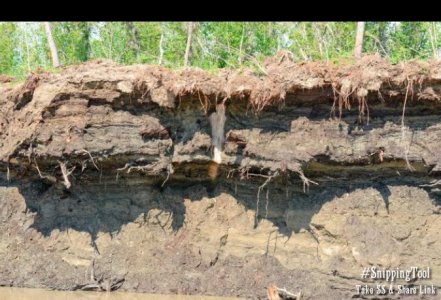Paco Dennis
SF VIP
- Location
- Mid-Missouri
Please do your own research for the facts, so you can determine them yourselves. My research is summarized by perplexity.ai.
Permafrost Melting in Yukon
Permafrost, a layer of frozen soil and rock, covers much of the Yukon, Canada. As the region warms due to climate change, permafrost is thawing at an alarming rate, posing significant threats to infrastructure, ecosystems, and communities. Here are some key findings and concerns:- Thawing Rates: Permafrost is thawing rapidly, with some areas experiencing up to 3°C (5.4°F) of warming per decade. This is significantly faster than the global average.
- Infrastructure Impacts: Thawing permafrost is causing widespread damage to roads, bridges, and buildings. The Alaska Highway, a critical transportation route, is particularly vulnerable, with sections experiencing significant settlement and cracking.
- Ecosystem Disruptions: Thawing permafrost is altering soil chemistry, affecting plant growth, and disrupting nutrient cycles. This can have cascading effects on Yukon’s unique ecosystems, including boreal forests, tundra, and wetlands.
- Water Quality Changes: Thawing permafrost is releasing stored carbon and nutrients into waterways, altering water chemistry and potentially impacting aquatic life.
- Increased Erosion: Thawing permafrost is leading to increased erosion and landslides, particularly along rivers and coastal areas.
- Community Concerns: Permafrost thawing is affecting traditional hunting and fishing practices, as well as the overall quality of life for Yukon’s Indigenous communities.
- Climate Change Feedback Loops: Thawing permafrost is releasing methane and carbon dioxide, accelerating climate change and creating a feedback loop that exacerbates warming.
Mitigation and Adaptation Strategies:
- Monitoring and Research: Continued monitoring of permafrost thaw rates and impacts is essential for understanding the extent of the problem and developing effective mitigation strategies.
- Infrastructure Design and Maintenance: Roads, bridges, and buildings must be designed and maintained with permafrost thawing in mind, incorporating features such as flexible foundations and drainage systems.
- Ecosystem-Based Management: Conservation efforts should focus on preserving and restoring ecosystems, including the reintroduction of native vegetation and habitat restoration.
- Community Engagement and Adaptation: Indigenous communities must be involved in decision-making processes and receive support for adapting to permafrost thawing impacts, including traditional knowledge sharing and cultural preservation.
- Climate Change Mitigation: Reducing greenhouse gas emissions globally is crucial for slowing permafrost thawing and addressing its consequences.
Key Sources:
- Yukon Permafrost Database
- “Permafrost Loss Dramatically Changes Yukon River Chemistry and Hydrology” (2016)
- “Driving on Permafrost-Affected Roads” (Yukon Government)
- “Permafrost in the Northwest Territories — ClimateData.ca” (2024)
- “Five Fascinating Ice Age Finds Discovered in Yukon Permafrost” (2022)



